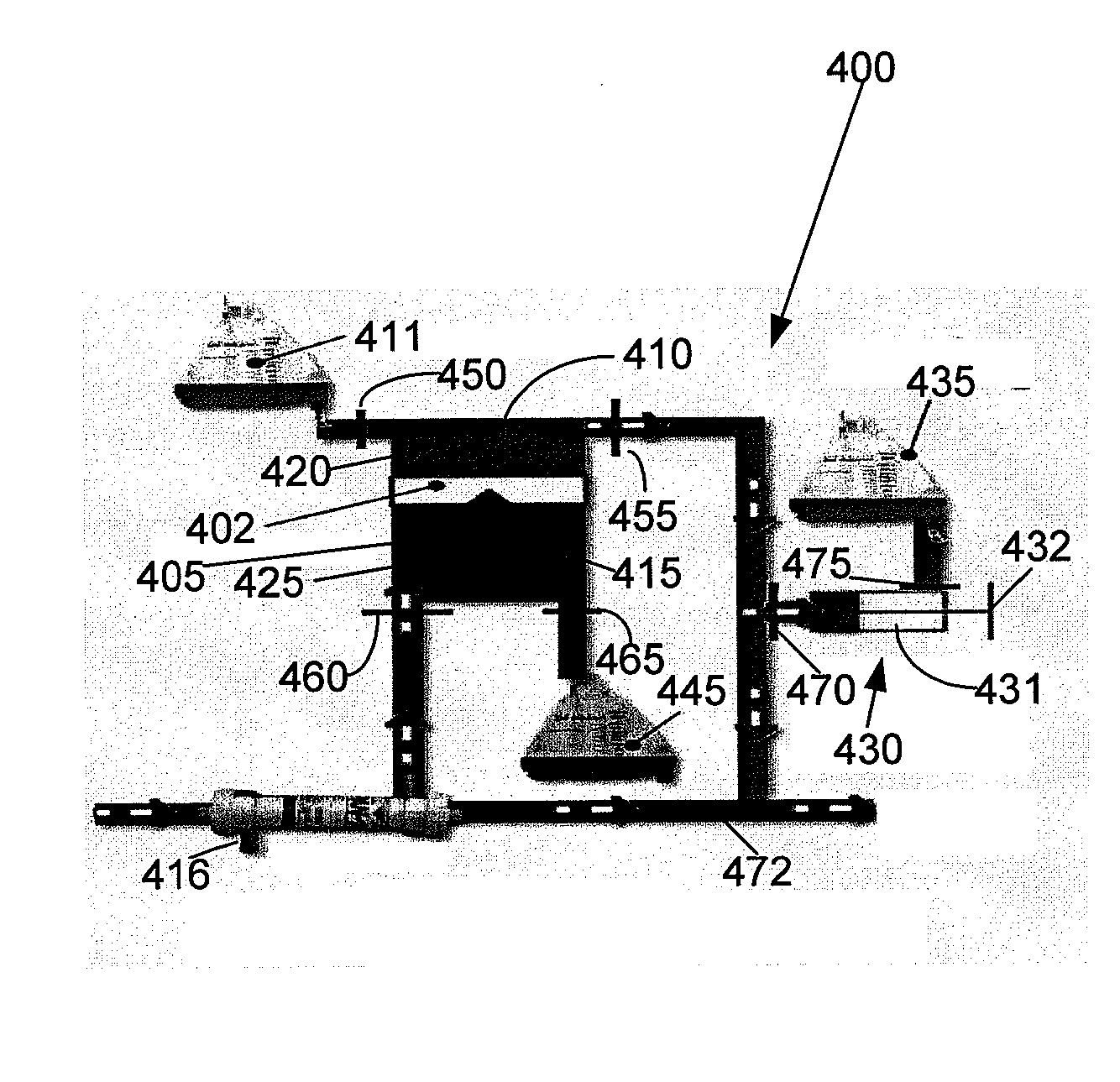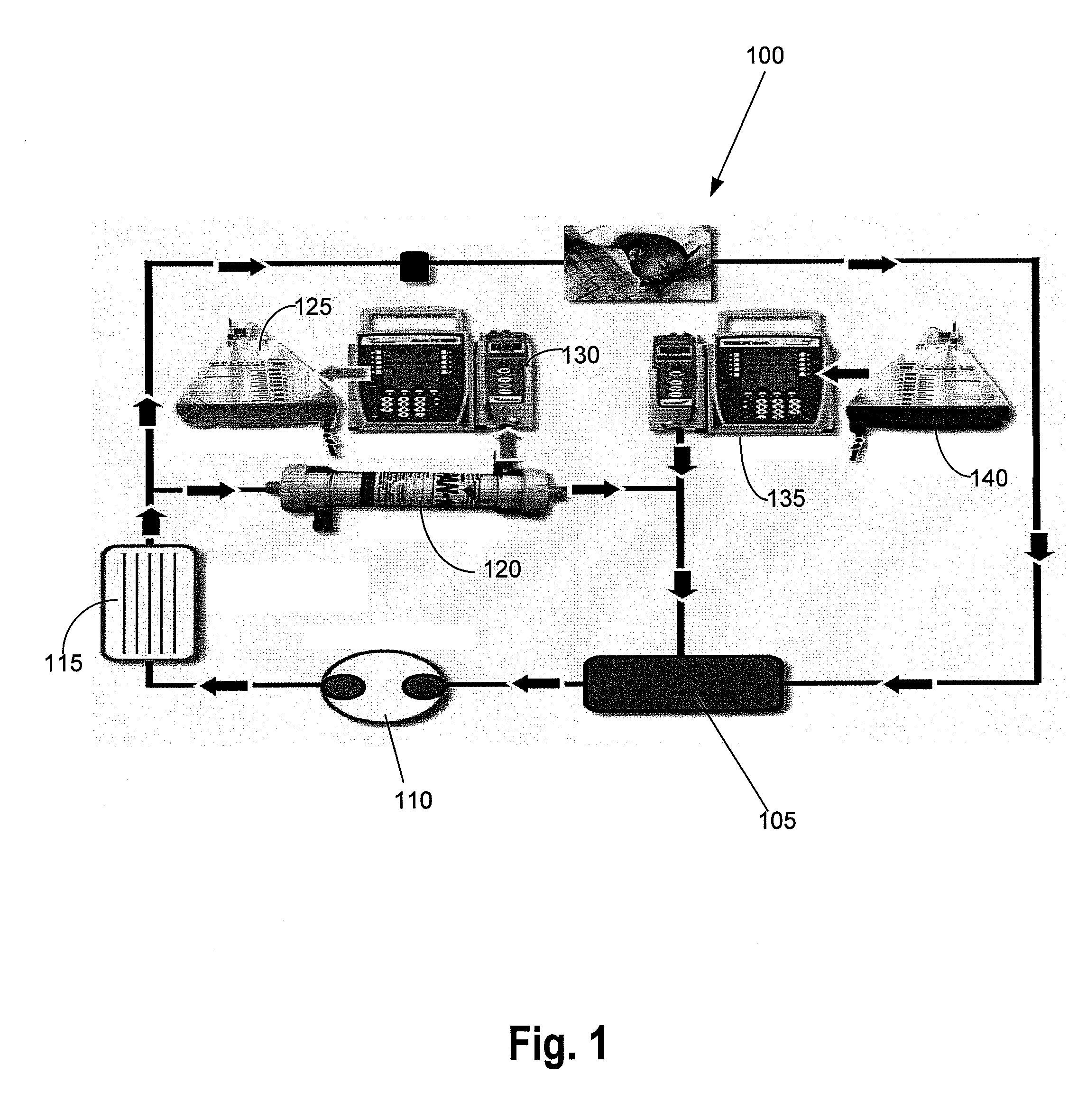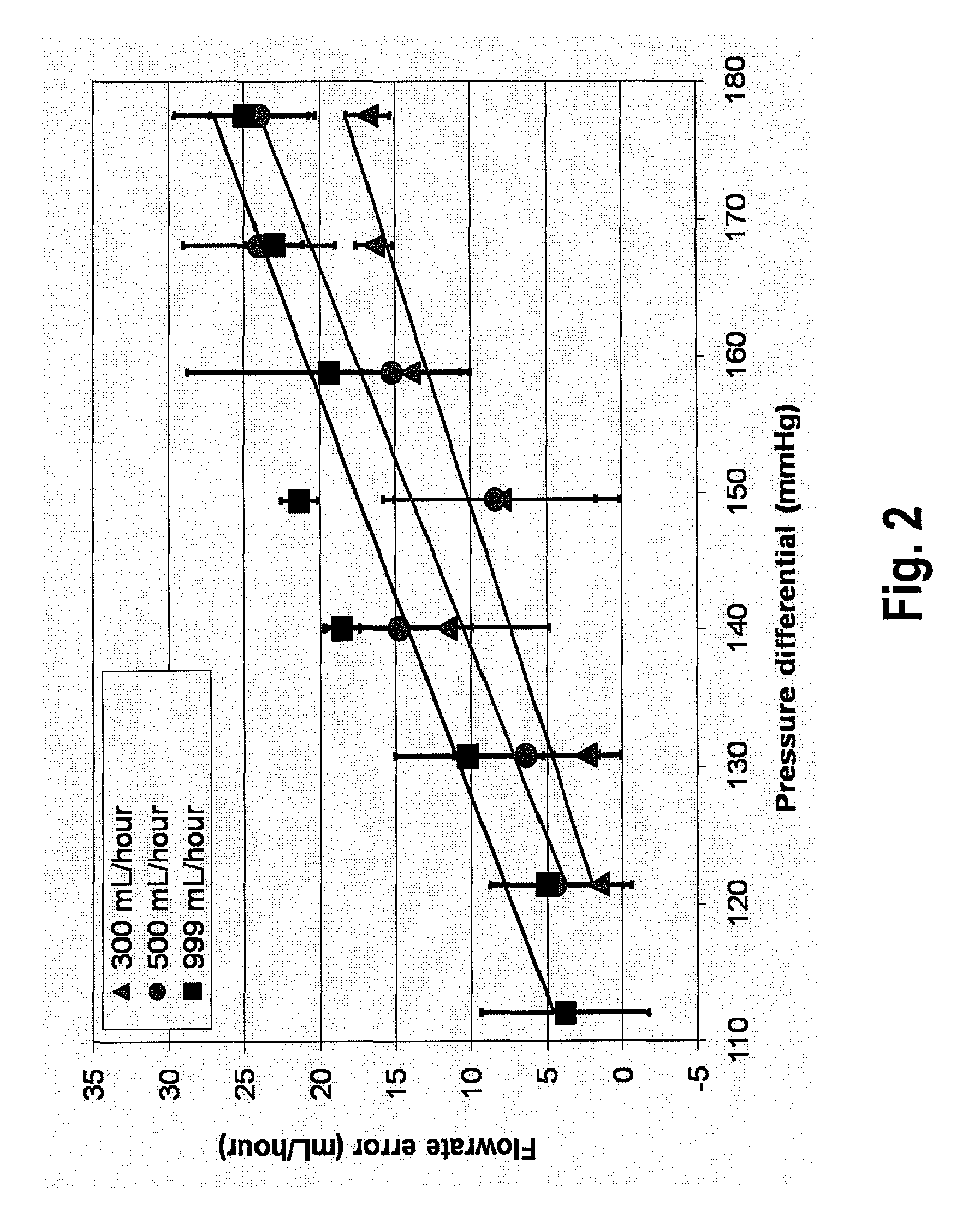Novel Fluid Management System for Accurate Continuous Hemofiltration in Extracorporeal Membrane Oxygenation (ECMO)
- Summary
- Abstract
- Description
- Claims
- Application Information
AI Technical Summary
Benefits of technology
Problems solved by technology
Method used
Image
Examples
Embodiment Construction
[0031]Various embodiments are described more fully below with reference to the accompanying drawings, which form a part hereof, and which show specific embodiments of the invention. However, embodiments may be implemented in many different forms and should not be construed as limited to the embodiments set forth herein; rather, these embodiments are provided so that this disclosure will be thorough and complete, and will fully convey the scope of the invention to those skilled in the art. Accordingly, the following detailed description is, therefore, not to be taken in a limiting sense.
[0032]Referring now to FIG. 3A, the present invention is a combined ECMO-CVVH system 300 comprised of an ECMO bladder 305, a blood pump 310, an oxygenator 315, and a flow probe 325. Blood is continuously drained from a patient's venous system and circulated through the ECMO bladder 305. The blood pump 310 draws blood from the ECMO bladder 305, which works like the right atrium. The function of this EC...
PUM
| Property | Measurement | Unit |
|---|---|---|
| Time | aaaaa | aaaaa |
| Flow rate | aaaaa | aaaaa |
| Sterile | aaaaa | aaaaa |
Abstract
Description
Claims
Application Information
 Login to View More
Login to View More - R&D
- Intellectual Property
- Life Sciences
- Materials
- Tech Scout
- Unparalleled Data Quality
- Higher Quality Content
- 60% Fewer Hallucinations
Browse by: Latest US Patents, China's latest patents, Technical Efficacy Thesaurus, Application Domain, Technology Topic, Popular Technical Reports.
© 2025 PatSnap. All rights reserved.Legal|Privacy policy|Modern Slavery Act Transparency Statement|Sitemap|About US| Contact US: help@patsnap.com



